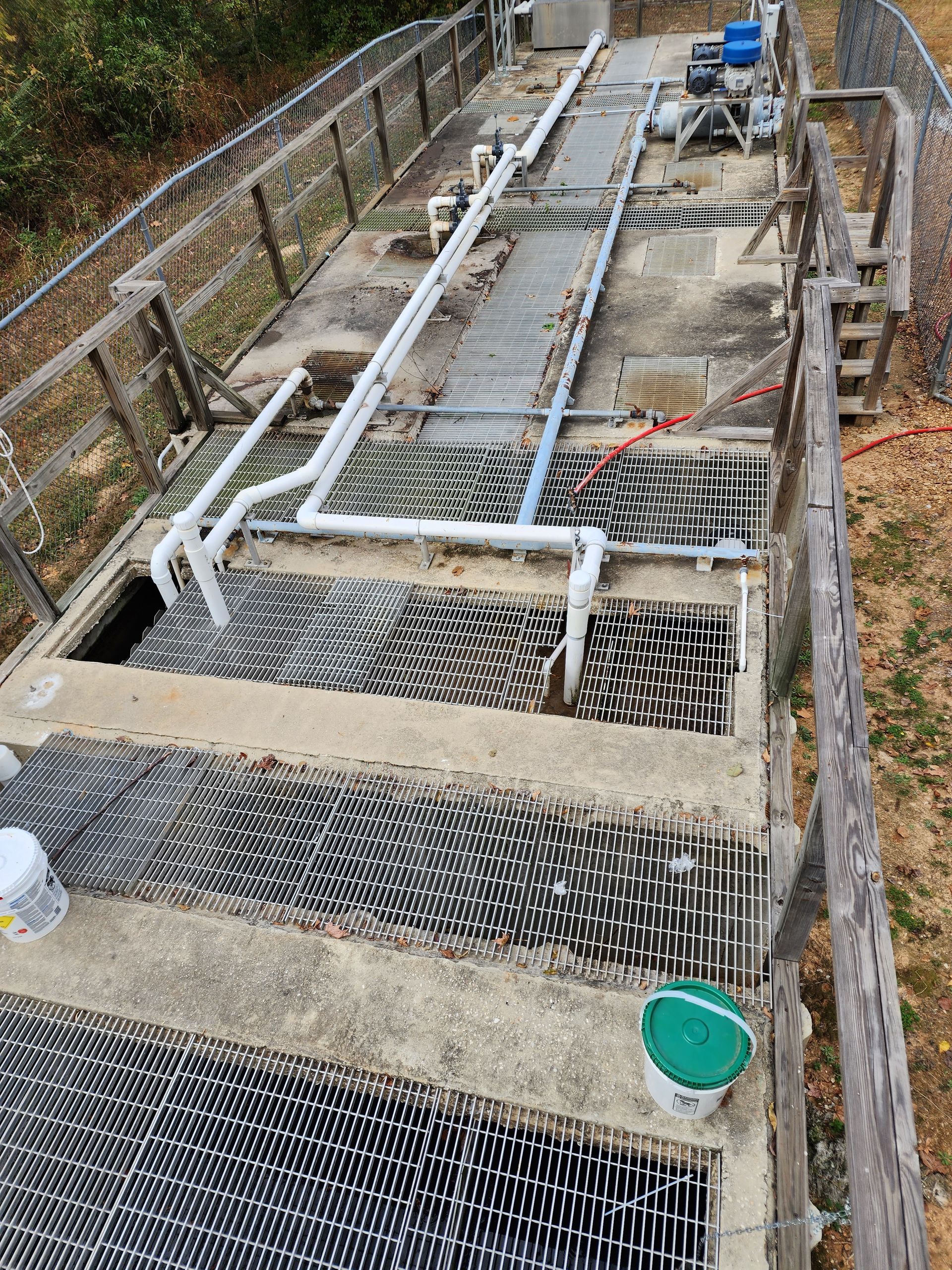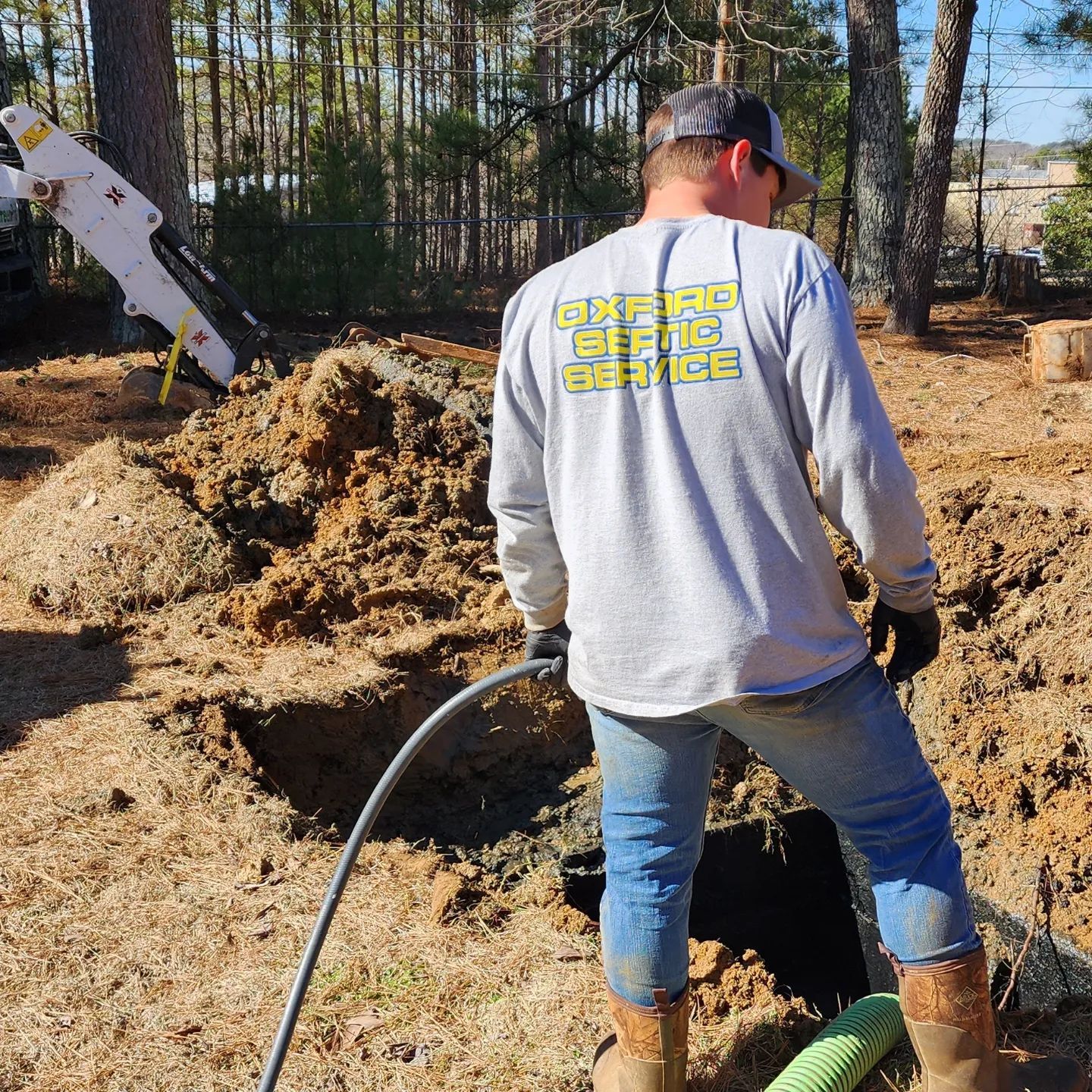What to Expect During a Septic Tank Pumping Service
January 12, 2024
What to Expect During a Septic Tank Pumping Service
If you're a homeowner in Oxford, MS, with a septic system, regular maintenance is essential to keep it running smoothly. One of the most crucial aspects of septic system care is septic tank pumping. However, many homeowners are unsure of what to expect during this service. In this comprehensive guide, we'll walk you through the process of septic tank pumping and explain why it's vital for the health and longevity of your system.
Understanding Septic Tank Pumping
Before we dive into what happens during a septic tank pumping service, let's briefly review what a septic tank is and why it needs pumping.
Septic Tank Basics: A septic tank is a large underground container that collects and treats wastewater from your home. It separates solid waste from liquids, allowing bacteria to break down the solids into sludge, which settles at the bottom of the tank. The clarified wastewater then flows into the drain field, where it is further treated in the soil.
The Need for Pumping: Over time, the solid sludge layer in the septic tank builds up. If not removed regularly, this layer can exceed the tank's capacity, leading to blockages, backups, and potential damage to your system. Septic tank pumping is the process of removing the accumulated sludge, preventing these issues and ensuring your septic system functions correctly.
What to Expect During Septic Tank Pumping
1. Scheduling the Service
When it's time for your septic tank to be pumped, you'll typically contact a trusted septic service provider like Oxford Septic Service. They will schedule an appointment that works for you.
2. Assessment
On the scheduled day, a professional technician will arrive at your property with a service vehicle equipped for septic pumping. They'll begin by assessing the location of your septic tank and uncovering the tank's access lid. In some cases, this may involve digging to expose the lid if it's buried.
3. Pumping Process
Once the septic tank lid is accessible, the technician will use a specialized vacuum pump to extract the sludge and liquid from the tank. This process is typically quick and efficient, and it ensures that the tank is thoroughly emptied.
4. Inspection and Maintenance
After pumping, the technician may conduct a visual inspection of the tank to check for any signs of damage or issues. If necessary, minor repairs or maintenance can be performed during this visit.
5. Lid Replacement
Once the pumping and inspection are complete, the technician will securely replace the septic tank lid. This ensures the safety of your property and prevents unauthorized access to the tank.
6. Clean-Up
Before leaving, the technician will clean up the work area, ensuring that no debris or soil is left behind. They will also provide you with any necessary information, such as the date of the next recommended pumping and any maintenance tips.
Why Septic Tank Pumping Matters
Regular septic tank pumping is crucial for several reasons:
Preventing Blockages: Pumping removes accumulated sludge, preventing it from clogging pipes, drains, and the drain field.
System Longevity: Pumping extends the life of your septic system by reducing the risk of damage and costly repairs.
Environmental Protection: Proper maintenance ensures that wastewater is effectively treated and does not harm the environment.
Health and Safety: A well-maintained septic system reduces the risk of sewage backups and associated health hazards.
How Often Should You Pump Your Septic Tank?
The frequency of septic tank pumping depends on various factors, including the tank's size, the number of occupants in your home, and your water usage. As a general guideline, septic tanks should be pumped every 3 to 5 years. However, it's essential to consult with a professional like Oxford Septic Service to determine the ideal pumping schedule for your specific system.
In conclusion, septic tank pumping is a vital part of septic system maintenance that should not be overlooked. By understanding the process and its importance, homeowners in Oxford, MS, can ensure the long-term functionality of their septic systems. If you're due for a septic tank pumping or have any questions about septic system care, don't hesitate to reach out to a trusted provider like Oxford Septic Service for guidance and assistance.

Commercial properties rely on septic systems to manage wastewater efficiently and comply with environmental regulations. Proper maintenance is crucial to prevent system failures, protect public health, and ensure uninterrupted business operations. In this guide, Oxford Septic Services shares valuable tips to help business owners maintain their commercial septic systems effectively. Chapter 1: Understanding Commercial Septic Systems Overview of the components and functioning of commercial septic systems, including tanks, pipes, and drain fields Explanation of the differences between residential and commercial septic systems, such as larger capacity requirements and higher wastewater volumes Chapter 2: Implementing Regular Maintenance Practices Importance of scheduling routine maintenance tasks, such as septic tank pumping, inspections, and grease trap cleaning, to prevent system failures and maintain compliance with regulations Tips for creating a maintenance schedule and partnering with qualified professionals, like Oxford Septic Services, to ensure timely service Chapter 3: Monitoring System Performance Discussion of the importance of monitoring system performance indicators, such as wastewater flow rates, effluent quality, and odors, to detect issues early and prevent costly repairs Recommendations for installing monitoring devices, such as flow meters and alarm systems, to provide real-time feedback on system health Chapter 4: Implementing Best Practices for Waste Management Explanation of best practices for managing wastewater generated by commercial operations, including proper disposal of grease, chemicals, and other contaminants Importance of educating employees about the impact of their actions on the septic system and providing training on proper waste management procedures Chapter 5: Maintaining Compliance with Regulatory Requirements Overview of regulatory requirements for commercial septic systems, including permitting, reporting, and record-keeping obligations Tips for staying informed about local regulations and working with regulatory agencies to ensure compliance Chapter 6: Planning for Emergency Situations Importance of developing an emergency response plan to address system failures, leaks, and other unforeseen events promptly Recommendations for establishing relationships with emergency service providers, like Oxford Septic Services, to ensure rapid response and minimize downtime Conclusion: Proper maintenance is essential for ensuring the reliable operation of commercial septic systems and protecting public health and the environment. By implementing regular maintenance practices, monitoring system performance, and staying informed about regulatory requirements, business owners can minimize the risk of system failures and ensure compliance with environmental regulations. With the support of experienced professionals like Oxford Septic Services, commercial property owners can maintain efficient and reliable septic systems for years to come.

Septic systems play a crucial role in managing wastewater for millions of homes and businesses across the country. Regular maintenance is essential to ensure these systems function efficiently and avoid costly repairs. In this guide, Oxford Septic Services sheds light on the importance of regular septic system maintenance and provides valuable insights to help homeowners and business owners understand why proactive care is essential. Chapter 1: Preventing System Failures Explanation of how regular maintenance, including septic tank pumping and inspections, helps prevent system failures by identifying and addressing issues before they escalate Examples of common problems that can lead to system failures, such as clogs, leaks, and drain field saturation, and how proactive maintenance can mitigate these risks Chapter 2: Protecting Property Value Discussion of how a well-maintained septic system enhances property value by providing reliable wastewater treatment and minimizing the risk of property damage from system failures Importance of maintaining accurate maintenance records and ensuring compliance with local regulations to demonstrate the system's integrity to potential buyers Chapter 3: Safeguarding Health and Safety Overview of the health and safety hazards associated with neglected septic systems, including groundwater contamination, exposure to pathogens, and foul odors Role of regular maintenance in safeguarding public health and protecting the environment from the harmful effects of untreated wastewater Chapter 4: Extending System Lifespan Explanation of how regular maintenance extends the lifespan of septic systems by reducing wear and tear on system components and preventing premature failure Importance of proactive care in preserving the structural integrity of tanks, pipes, and drain fields to avoid costly replacements Chapter 5: Minimizing Environmental Impact Discussion of the environmental benefits of regular septic system maintenance, such as reducing nutrient pollution, preserving water quality, and conserving natural resources Role of environmentally friendly maintenance practices, such as soil aeration and bioaugmentation, in minimizing the ecological footprint of septic systems Chapter 6: Compliance with Regulations Overview of regulatory requirements for septic system maintenance, including pumping frequency guidelines, inspection mandates, and reporting obligations Importance of staying informed about local regulations and working with licensed professionals, like Oxford Septic Services, to ensure compliance and avoid penalties Conclusion: Regular septic system maintenance is essential for protecting property value, safeguarding health and safety, and minimizing environmental impact. By understanding the importance of proactive care and partnering with trusted professionals like Oxford Septic Services, homeowners and business owners can ensure their septic systems remain reliable and efficient for years to come.
